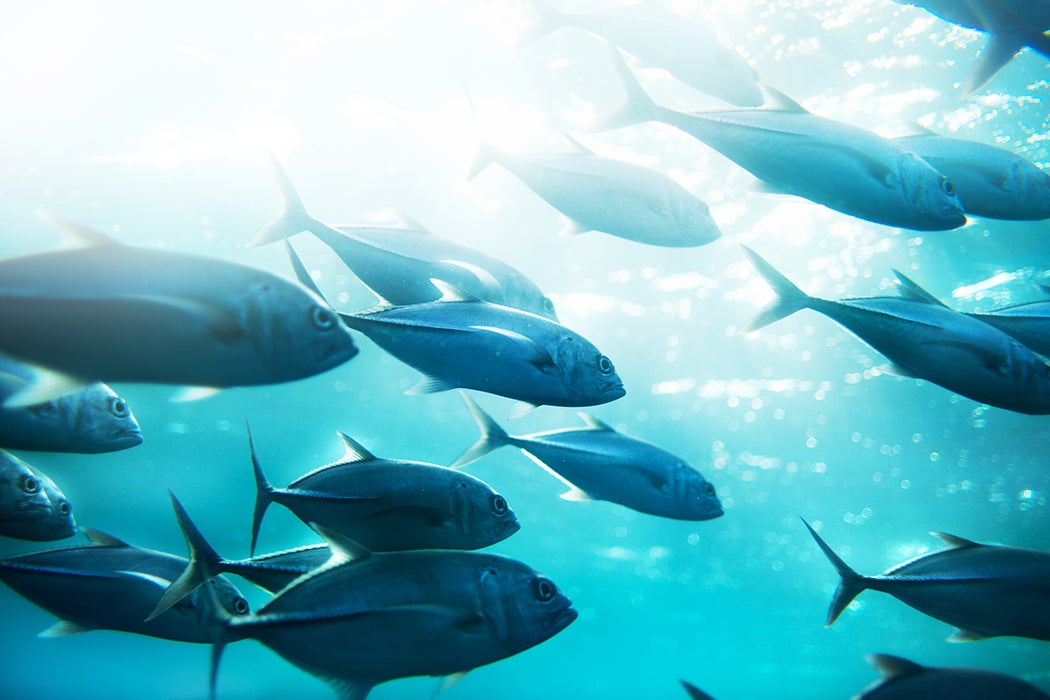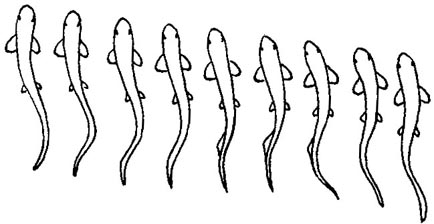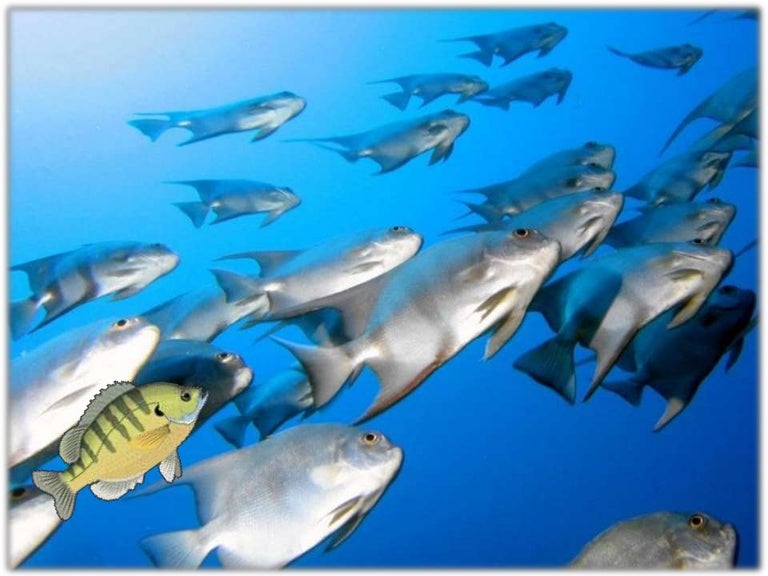Describe How Fish Use Their Muscles to Swim
The muscles provide the power for swimming and constitute up to 80 of the fish itself. Fishes with wide pectoral fins like wrasses swim by flapping their pectoral fins.
A sinusoidal wave passes down from the head to the tail.

. Red muscle is much better developed in muscles involved in sustained swimming such as lateral red muscle in tunas and pectoral fin muscles in wrasses and parrotfishes. The fins provide a platform to. A They have small teeth and sharp claws which they use for prying and killing.
Also like birds they have a special body form to move through the water properly. The muscles are arranged in multiple directions myomeres that allow the fish to move in any direction. The vector forces exerted on the water by such motion cancel out laterally but.
Some fish such as sharks use stiff strong fins to create dynamic lift and propel themselves. The mouth and stomach cavity are in the center of the bell surrounded by fleshy arms. Conventional wisdom holds that contractions in the front part of red muscle generate a fishs cruising power.
Others might blow bubbles out their mouths or in the case of herring out their rear ends producing fish farts. When it comes to swimming fish demonstrate an effortless grace and power that humans can only dream of. They counteract the possibility of sinking with muscular effort reduced by decreasing drag and having a thinner cross-section -- both offered by the absence of the buoyancy device.
Skeletal muscles are also attached to bones that move the fishs paired fins. A jellyfishs dome-shaped body or bell is made up of a solid jellylike substance covered by a thin layer of living cells. There are exceptions but this is normally achieved by the fish contracting muscles on either side of its body in order to generate waves of flexion that travel the length of the body from nose to tail generally getting larger as they go along.
Their gentle movement belies a complex flow of water that make these creatures highly energy-efficient swimmers. Fish use the muscles on the sides of their bodies to push against the water in a similar manner to swim. The jellyfish swims by contracting and relaxing a ring of muscles around the bell.
Fish use two strips of blood-rich red muscle - one on either side of their bodies - to power the wavy motion of steady swimming. They flex back and forth propelling them in the right direction often very fast. Red muscle usually forms a thin lateral superficial sheet under the skin between the epaxial and hypaxial muscle masses on each side of the fish.
-muscular tails for direction and push. B They have massive webbed paws that make them excellent swimmers. Up to 24 cash back column acts as levers that operate for the movement of the fish.
The fins allow them to move through the water easily. Streamlined fish such as salmon undulate the caudal portions of their bodies. The muscles open and close the bell drawing in water and then forcing it out again to push the.
The skull is the only truly fixed part of a fish. This is usually in the form of fins. Being well supplied with oxygen red muscle is used for steady constant-effort swimming and is found in active fish -particularly those that live in the open waters of seas and oceans.
Some fish use specialized muscles around their buoyancy-modulating swim bladders to make noise. Fish use their muscles to move their bodies in a special movement. Fish muscles are segmented due to the way they swimOr they swim due to the way the muscles are segmentedYoud have to ask nature which came first the muscles or the swimmingMuch like how a.
Using the Skeleton and Muscles The primary function of the skeleton is to aide movement of other parts. Check out the videos in this post to see the hypnotic pulse of swimming jellyfish. Skeletal muscles also move dorsal fins.
It is common for fish to use more than one form of propulsion although they will display one dominant mode of swimming Gait changes have even been observed in juvenile reef fish of various sizes. Fish exhibit an s-shaped swimming pattern Bands of muscle along the body called myomeres drive this swimming motion rhythmic contractions Depending on the type of fish different fins may be used primarily for the forward movement. C They were hunted to the brink of extinction in the late 1800s.
Other fishes like fast-swimming tunas move mostly with their caudal fin but use long thin pectoral fins for steering. Fish swim by exerting force against the surrounding water. Their skeletons and muscles work together to allow them to swim along with their fins and something called a swim bladder.
The middle and rear portions function much like the rigid driveshaft of a truck. They transmit power from. D Their fur is thick and each hair is dense for better insulation.
Nevertheless red muscle seldom makes up even as much as 20 of. It does not move in and of itself but acts as a point of stability for other bones. While the fastest fish swim at up to 70 miles per hour no human has ever managed even 4.
Their muscle is mostly brown to facilitate constant swimming and their fins are usually retracted as they are only used for turning.
Why Do Fishes Of The Same Size Swim Together Quora

Fish Swimming How Do Fish Swim Dk Find Out
If We Swim In Water Then Does Fish Swim In Air Quora

Can Fish Sense Hunger Low Oxygen And How Do They Swim Straight Anatomy Motion Resume Examples

What Makes Fish Swim Fast Jstor Daily

Movement Of Fishes Interdependence Between Living Things Cbse Grade 5 Environmental Science Youtube

Pdf Tuning In To Fish Swimming Waves Body Form Swimming Mode And Muscle Function Semantic Scholar



No comments for "Describe How Fish Use Their Muscles to Swim"
Post a Comment